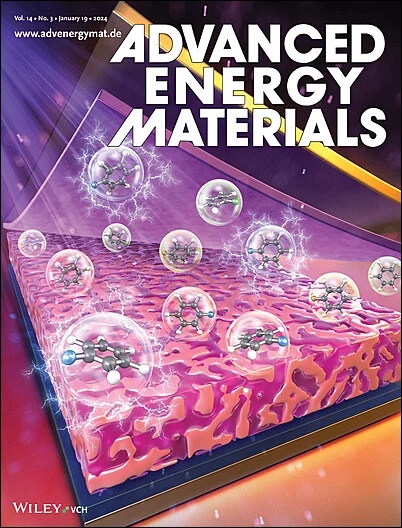Battery‐Grade Lithium Materials: Virgin Production and Recycling, a Techno‐Economic Comparison
IF 26
1区 材料科学
Q1 CHEMISTRY, PHYSICAL
引用次数: 0
Abstract
Lithium has been identified as an essential mineral to the economic and national security of the United States. It is vital for rechargeable batteries that surround us daily from the personal electronics to large‐scale energy storage. With a comprehensive techno‐economic analysis, the cost of battery‐grade lithium compounds production, i.e., lithium carbonate (LC) is evaluated and lithium hydroxide monohydrate (LHM), from both virgin (spodumene ore and brine) and recycled feedstocks (spent lithium‐ion batteries). The goal of this study is to inform about the economics of lithium compounds production with comprehensive insights into differences in manufacturing routes and pave a pathway to explore more innovative, domestic manufacturing processes in future for their cost competitiveness and environmental impact. The study includes details on mining and extraction operations as well as unit level operation in the refining process. Moreover, process level information has been collected for pyrometallurgical and hydrometallurgical battery recycling routes. This analysis shows that brine and direct lithium extraction are the cheapest pathways to produce LC or LHM (between $3.39 and 6.20 kg电池级锂材料:原始生产和回收,技术-经济比较
锂已被确定为对美国经济和国家安全至关重要的矿物。从个人电子产品到大规模的能量存储,可充电电池在我们日常生活中至关重要。通过全面的技术经济分析,评估了电池级锂化合物生产的成本,即碳酸锂(LC)和一水氢氧化锂(LHM),包括原生(锂辉石矿石和盐水)和回收原料(废锂离子电池)。本研究的目的是通过对制造路线差异的全面洞察,了解锂化合物生产的经济学,并为探索未来更具成本竞争力和环境影响的创新国内制造工艺铺平道路。该研究包括采矿和提取操作以及精炼过程中的单元级操作的详细信息。此外,还收集了火法冶金和湿法冶金电池回收路线的工艺级信息。该分析表明,卤水和直接锂提取是生产LC或LHM最便宜的途径(在3.39至6.20 kg - 1之间)。矿石和回收路线的生产成本可在4.17美元至53.41美元kg - 1之间,高度取决于资本设备投资、工厂位置和锂辉石精矿SC6.0的价格。
本文章由计算机程序翻译,如有差异,请以英文原文为准。
求助全文
约1分钟内获得全文
求助全文
来源期刊

Advanced Energy Materials
CHEMISTRY, PHYSICAL-ENERGY & FUELS
CiteScore
41.90
自引率
4.00%
发文量
889
审稿时长
1.4 months
期刊介绍:
Established in 2011, Advanced Energy Materials is an international, interdisciplinary, English-language journal that focuses on materials used in energy harvesting, conversion, and storage. It is regarded as a top-quality journal alongside Advanced Materials, Advanced Functional Materials, and Small.
With a 2022 Impact Factor of 27.8, Advanced Energy Materials is considered a prime source for the best energy-related research. The journal covers a wide range of topics in energy-related research, including organic and inorganic photovoltaics, batteries and supercapacitors, fuel cells, hydrogen generation and storage, thermoelectrics, water splitting and photocatalysis, solar fuels and thermosolar power, magnetocalorics, and piezoelectronics.
The readership of Advanced Energy Materials includes materials scientists, chemists, physicists, and engineers in both academia and industry. The journal is indexed in various databases and collections, such as Advanced Technologies & Aerospace Database, FIZ Karlsruhe, INSPEC (IET), Science Citation Index Expanded, Technology Collection, and Web of Science, among others.
 求助内容:
求助内容: 应助结果提醒方式:
应助结果提醒方式:


